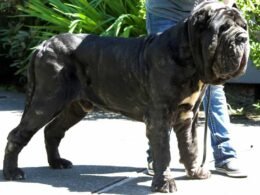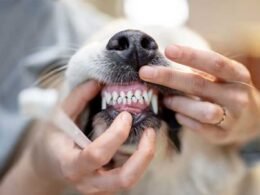The loss of a beloved pet can be deeply emotional. For many pet owners, preserving the memory of their companion becomes a heartfelt priority. Among the various options available—cremation, burial, or keepsake jewelry—taxidermy offers a unique and tangible way to keep a pet’s physical likeness intact. One of the most intricate and emotionally sensitive components of this process is preserving pet fur in taxidermy, especially to maintain the animal’s unique appearance and markings.
In this blog, we’ll take an in-depth look at how taxidermists preserve pet fur and markings, from preparation to final display. We’ll also explore the challenges, techniques, and artistry involved in honoring a pet’s legacy through taxidermy.
Understanding the Role of Fur in Pet Taxidermy
Pet taxidermy is different from traditional wildlife taxidermy. Unlike game trophies, where accuracy is more general, preserving a pet demands a high level of detail and emotional sensitivity. Pet owners expect their taxidermist to recreate their animal’s exact appearance, right down to fur patterns, whorls, and color variations. Fur is central to this preservation, as it’s the most visually recognizable trait of the animal.
Step 1: Preparing the Body
Immediate Freezing or Refrigeration
Preserving pet fur begins immediately after the pet passes. To prevent fur loss and tissue decomposition, the body must be refrigerated or frozen as soon as possible. Delay in this step can cause bacterial breakdown, which not only compromises the skin and fur but may lead to unpleasant odors and discoloration.
Pro tip: Refrigeration is best for short-term preservation (24–48 hours), while freezing is ideal if taxidermy won’t commence immediately.
Inspection and Documentation
Before any physical work begins, the taxidermist conducts a thorough examination. Photographs from multiple angles help document unique markings and patterns. Owners are encouraged to provide photos showing the pet’s most typical expressions and postures. This visual reference is critical to replicating the animal’s fur and markings with realism.
Step 2: Skinning and Flesh Removal
The Delicate Skinning Process
Skinning a pet is a surgical process requiring exceptional care. The goal is to preserve the hide and its fur as a single, intact unit. Depending on the animal’s size, the skinning technique may vary:
- Dorsal method:Incision along the back; often used for full-body mounts.
- Ventral method:Incision along the belly; used when a seamless back appearance is critical.
In both cases, the taxidermist must work slowly to avoid stretching or tearing the skin, especially around the face, ears, and paws, where markings are often concentrated.
Fleshing
Once the skin is removed, it’s scraped clean of muscle, fat, and connective tissue—a step known as “fleshing.” This is crucial for preventing future decay and for ensuring that the skin lies flat during mounting. Any remaining biological material can cause slippage, where fur detaches from the skin.
Step 3: Tanning – Preserving the Skin and Fur
Why Tanning Matters
Tanning is the process of chemically treating the hide to preserve it for long-term display. It also stabilizes the fur, keeping it soft, flexible, and securely attached to the skin. Soft tanning methods are preferred for pets, as they maintain a more natural texture and reduce brittleness.
Fur-Safe Tanning Techniques
Special attention is given to how the fur will respond to the tanning chemicals. Some dyes or bleaches used on commercial furs may be too harsh for preserving pet fur in taxidermy. Therefore, many taxidermists use:
- Alum tanning: Gentle and reliable, though not waterproof.
- Formaldehyde-free solutions: Environmentally safer and less toxic.
- Pickling and neutralization: pH-adjusted solutions to clean the skin without damaging the hair shafts.
Step 4: Rehydration and Mounting
Once tanned, the skin may be rehydrated to improve its pliability for mounting. Taxidermists then stretch and fit it over a custom or pre-made form designed to match the pet’s size and posture. This form acts like an anatomical mannequin.
Adjusting for Markings
Here’s where artistry meets science. The taxidermist must position the skin so that the pet’s markings are not distorted. For example:
- A symmetrical white stripe down the nose must be centered.
- Paw patches should align precisely.
- Fur direction (or nap) must flow naturally.
This level of accuracy often involves small tucks, pinning, and adjusting during the drying phase, which can take several days.
Step 5: Grooming and Finishing Touches
Brushing and Fluffing
Once the skin is secured and dry, the fur is brushed and fluffed to restore its original volume and sheen. Special grooming tools are used to remove any debris or dried tanning agents.
Color Correction and Touch-Up
Natural fading or blood staining may require gentle color correction using non-toxic airbrush dyes. However, this step is approached cautiously, especially for pets with intricate patterns like tortoiseshell cats or brindle dogs. The goal is to enhance—not overwrite—the original coloring.
Eyes, Nose, and Whiskers
To complete the look, glass eyes are set, and synthetic or preserved noses and whiskers may be added. Whiskers, in particular, are fragile and may require special adhesive or wire supports to retain their original positions.
Long-Term Care for Preserved Pet Fur
Even after mounting, maintaining the integrity of preserved pet fur in taxidermy requires ongoing care:
- Avoid direct sunlight:UV rays can bleach fur.
- Control humidity:Excess moisture can cause mold or mildew.
- Use insect repellents:Mothballs or cedar chips help deter fur-eating pests like dermestid beetles.
Some taxidermists also offer yearly grooming or touch-up services for pets kept on display.
Challenges in Preserving Pet Fur
Slippage
One of the biggest risks during the taxidermy process is “slippage”—when fur falls out in patches due to decomposition. This can result from delayed freezing or improper tanning. While some slippage can be hidden or repaired, severe cases may limit the final result.
Matted or Dirty Fur
Pets with long or poorly groomed coats present extra challenges. Matted fur may need to be carefully combed out or even trimmed, which could alter the animal’s look. In some cases, taxidermists must wash the fur before or after tanning—a risky move if not done properly.
Alternatives and Innovations
Freeze-Drying
Some taxidermists offer freeze-drying instead of traditional taxidermy. This process removes moisture without altering the structure, making it ideal for small pets like birds, hamsters, or reptiles. It preserves fur and markings with minimal handling, but it’s also more expensive and time-consuming.
3D Scanning and Replication
For owners hesitant about preserving their actual pet, 3D modeling and digital replication now offer an alternative. These synthetic recreations can mimic fur patterns and markings without using the real hide, offering a cruelty-free way to remember a beloved companion.
Conclusion
Preserving pet fur in taxidermy is a careful blend of technical skill and emotional sensitivity. Every step—from skinning and tanning to grooming and display—is tailored to honor the pet’s memory. Whether it’s the gentle swirl of fur on a dog’s chest or the delicate pattern of a cat’s face, preserving these markings allows pet owners to maintain a tangible connection to their beloved animals.
While taxidermy isn’t for everyone, it provides an incredibly personal form of memorialization for those seeking to keep their pet close, literally and emotionally. With proper care and professional attention, preserved pet fur can remain vibrant and beautiful for decades, serving as a lasting tribute to a cherished life.










